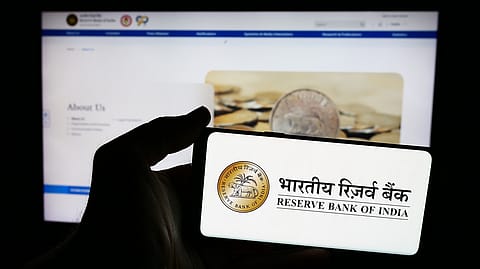RBI's stress test projects potential doubling of bank NPAs under adverse scenarios by March 2027
Despite this, banks are expected to uphold capital requirements, demonstrating resilience against potential global and domestic financial disruptions.

The Reserve Bank of India (RBI), in its latest Financial Stability Report (June 2025), highlighted that gross non-performing assets (NPAs) of banks may almost double in the next two years as per its macro stress test projections, which assess the resilience of the banking system to macro shocks.
"The aggregate GNPA ratio of the 46 banks may marginally rise from 2.3 per cent in March 2025 to 2.5 per cent in March 2027 under the baseline scenario and to 5.6 per cent and 5.3 per cent, under adverse scenario 1 and adverse scenario 2, respectively," the central bank says in its 153-page report.
Tests on Banks' Financial Health
It also discusses the macro stress test results exhibiting the resilience of scheduled commercial banks (SCBs) to macroeconomic shocks. "The results revealed that the aggregate CRAR (a key indicator of a bank’s financial health and ability to absorb potential losses) of 46 major SCBs may marginally dip to 17.0 per cent by March 2027 from 17.2 per cent in March 2025, under the baseline scenario. It may decline to 14.2 per cent under adverse scenario 1, and to 14.6 per cent under adverse scenario 2."
However, none of the banks would fall short of the regulatory minimum requirement of 9 per cent even under the adverse scenarios, the central bank asserted.
Highest Quality Capital
According to the RBI, the CET-1 capital ratio, the highest quality capital a bank holds, of the select 46 banks may rise from 14.6% in March 2025 to 15.2% by March 2027 under the baseline scenario. CET acts as a buffer to protect depositors and maintain financial system stability, and higher CET-1 ratios mean stronger banks with more ability to withstand financial shocks. "However, it may fall to 12.5% under adverse scenario 1, and to 12.9% under adverse scenario 2. None of the banks would breach the regulatory minimum requirement of 5.5 per cent under any of these scenarios."
Recommended Stories
The RBI says SCBs have further improved their liquidity positions in March 2025, as evident from the strengthening of both the liquidity coverage ratio (LCR) and the net stable funding ratio (NSFR). "Both LCR and NSFR have been comfortably above the regulatory minimum of 100 per cent across bank groups."
RBI's Macro Stress Tests
To assess the resilience of the banking system to macroeconomic shocks, the RBI's tests projected capital ratios of banks under three scenarios—a baseline and two adverse macro scenarios—over a two-year horizon, incorporating credit risk, market risk, and interest rate risk in the banking book within the framework.
Adverse Scenario 1: The central bank says Adverse Scenario 1 (geopolitical risk scenario) assumes a volatile global environment with heightened geopolitical risks and escalation of global financial market volatility. Supply chain disruptions adversely affect commodity prices, leading to a rise in domestic inflation. The scenario further assumes that domestic monetary policy tightens and the spread between lending rates and policy rate widens due to market instability.
Adverse Scenario 2: The RBI says this scenario (global growth slowdown scenario) assumes a synchronised sharp growth slowdown in key global economies. Spillovers through trade and financial channels, as well as market fragmentation, dent domestic GDP growth. As a result, monetary policy eases to support growth. The scenario further assumes a widening of lending spread due to higher uncertainty.